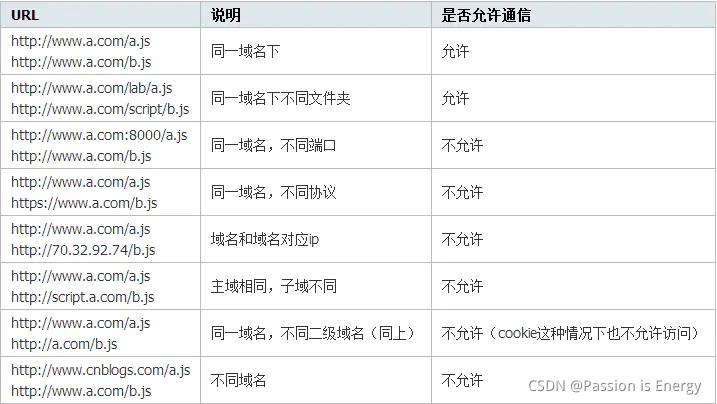1. 简单请求
1.1 简单请求方法
- get
- post
- head
1.1.2 get 和 head 请求区别
The HTTP HEAD and GET methods are identical, except that for HEAD requests, the server does not return a response body but still specifies the size of the response content using the Content-Length header.
1.head 请求没有 返回 response body, 只是 返回 Content-length, 用于显示 要返回的数据 size
2. 除此之外, head 请求 和 get 请求相同
1.2 简单请求不能有自定义请求头
- 简单请求不能有自定义请求头,如 Authorization
- 只能有如下 请求头的内容:
Accept
Accept-Language
Content-Language
Content-Type
DPR
Downlink
Save-Data
Viewport-Width
Width
1.3 如果是 post 请求,content-type 只能是以下三种类型
text/plain
multipart/form-data
application/x-www-form-urlencoded
2. 复杂请求
- 复杂请求方式:
1)除了 简单请求的三种方式: 如 put, delete, patch
2)还有,不满足简单请求的三个条件任意一种
3. 预检请求 options
1). 预检请求就是,当客户端发起 复杂请求,可能会有 cors (跨域问题), 预检请求就会先去探探路。这也就是,为什么每次 发起 复杂请求,检查元素中的 network 会有两个请求,一次是 options, 一次是真正的 复杂请求。
- . 当 options 请求探路回来,会带着
Access-Control-Allow-Origin, 其中会显示是否支持发起跨域请求。 如果允许,真正的复杂请求才会发起。
3.1 cors 跨域产生的情况有哪些?

3.2 axios 发起的请求, content-type 默认是 application/json
Axios converts this Javascript data to JSON by default. It also sets the “content-type” header to “application/json”. However, if you pass a serialized JSON object as data, Axios treats the content type as “application/x-www-form-urlencoded” (form-encoded request body).
除非客户端发送了一个 序列化的 json 对象的数据。